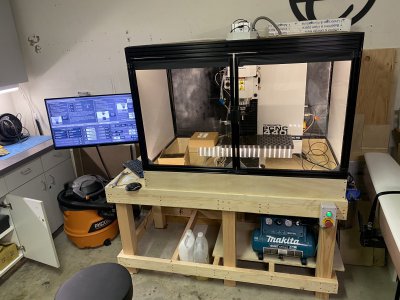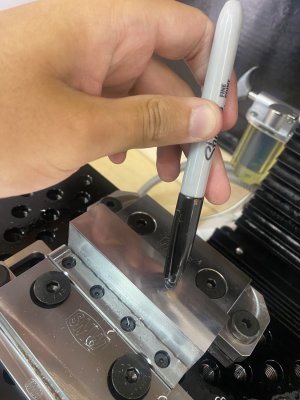- Joined
- Mar 27, 2023
- Messages
- 9
Hi all, I just purchased a Tormach 440! I am trying to figure out what to put it on. I did not order the Tormach stand because I am not planning on using their chip tray/enclosure ($$$). I will not be using flood coolant so I would prefer to set the Tormach on a table top and then build an aluminum enclosure around it. Preferred dimensions would be 48"-60"x30"x30". I am considering the following options:
McMaster 7ga extra heavy duty workbench (~$900 delivered to me)
Heavy/professional duty tool chest (16ga) with casters removed (~$1000)
DIY wood workbench (few hundred bucks)
I am really a fan of the tool chest because of the additional functionality, but I'm not sure about the rigidity of the frame. They do come with thick maple tops on them. The McMaster table is obviously very heavy duty, with a 7ga steel top as well, but over the 28"x48" area, I'm not sure how much better it would be in terms of rigidity vs the tool chest. I can make a workbench myself but I'm not sure if it would end up as rigid or not. I don't have experience with a quality tool chest or the McMaster product to know the difference.
Any recommendations here? My garage is quite space constrained so things that serve multiple purposes are quite valuable to me! I'm not trying to machine things with 0.001" all the time, so I don't think I need a crazy rigid foundation for the machine, but I also don't want to set it up on something that will prevent it from operating well at all. Lots of videos I see on YT people have them on DIY benches or small steel machine stands, hence the inspiration for my choices above.
Cheers!
McMaster 7ga extra heavy duty workbench (~$900 delivered to me)
Heavy/professional duty tool chest (16ga) with casters removed (~$1000)
DIY wood workbench (few hundred bucks)
I am really a fan of the tool chest because of the additional functionality, but I'm not sure about the rigidity of the frame. They do come with thick maple tops on them. The McMaster table is obviously very heavy duty, with a 7ga steel top as well, but over the 28"x48" area, I'm not sure how much better it would be in terms of rigidity vs the tool chest. I can make a workbench myself but I'm not sure if it would end up as rigid or not. I don't have experience with a quality tool chest or the McMaster product to know the difference.
Any recommendations here? My garage is quite space constrained so things that serve multiple purposes are quite valuable to me! I'm not trying to machine things with 0.001" all the time, so I don't think I need a crazy rigid foundation for the machine, but I also don't want to set it up on something that will prevent it from operating well at all. Lots of videos I see on YT people have them on DIY benches or small steel machine stands, hence the inspiration for my choices above.
Cheers!



